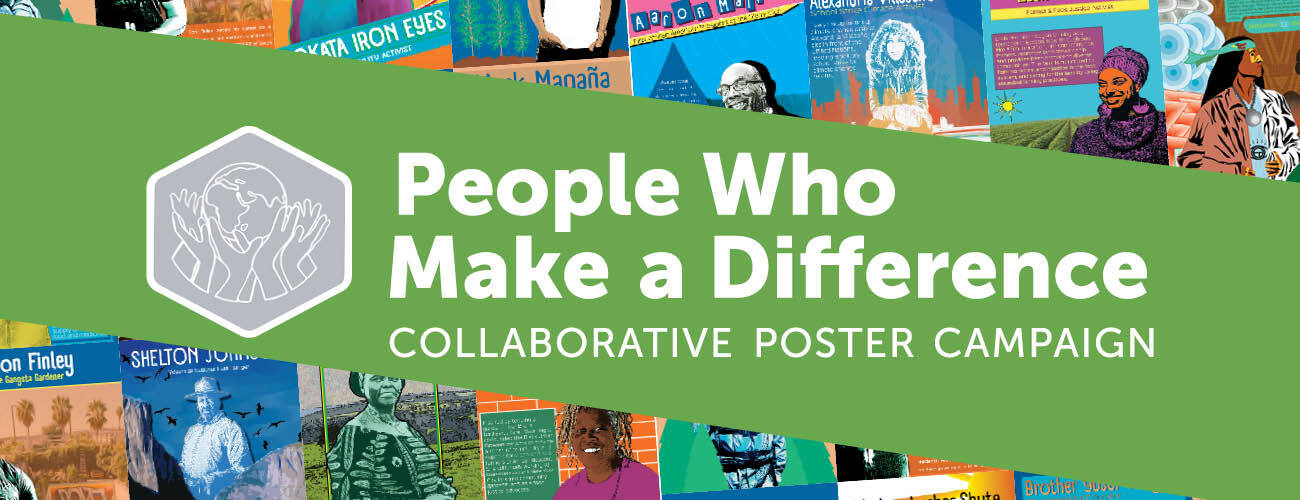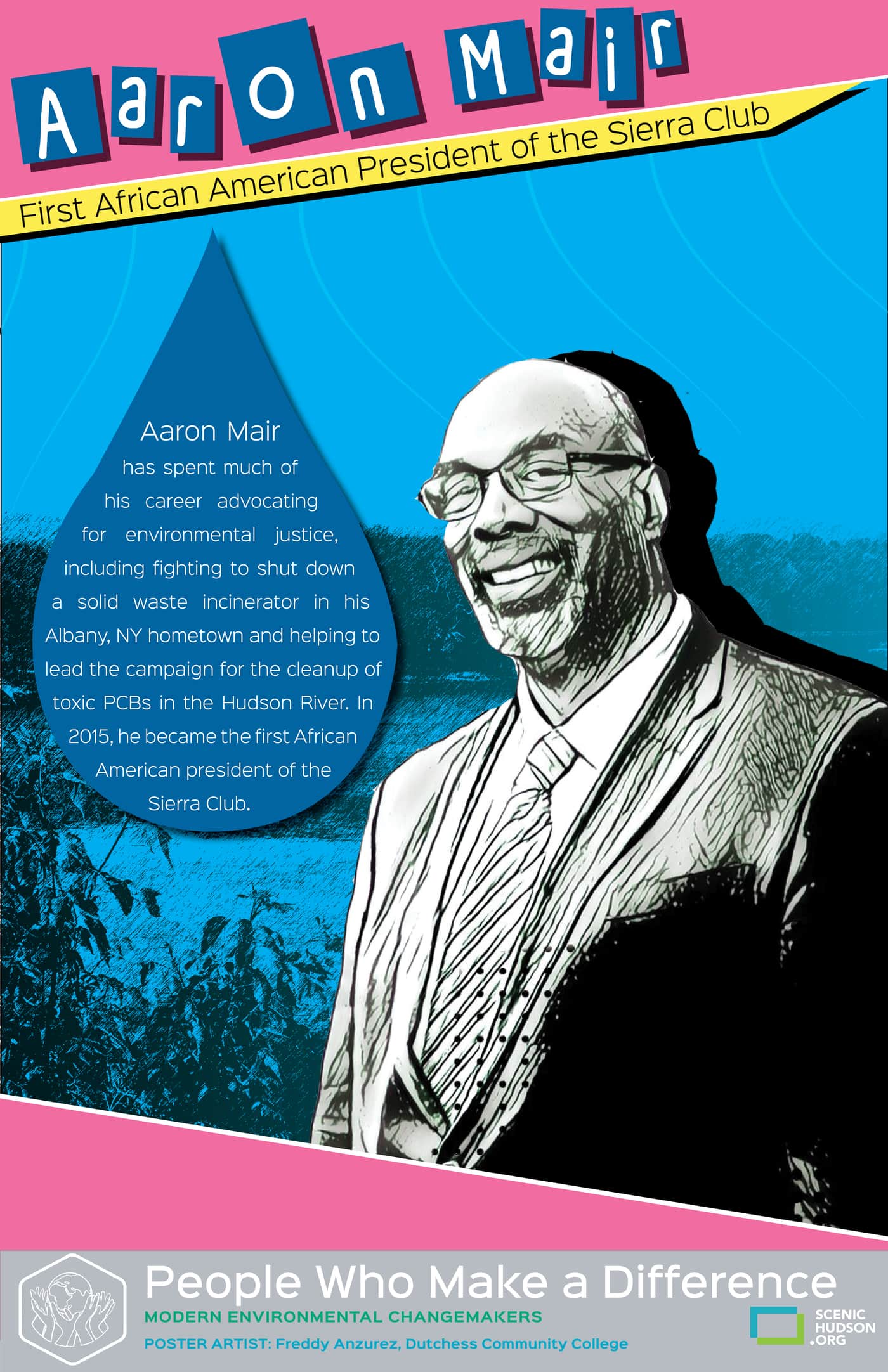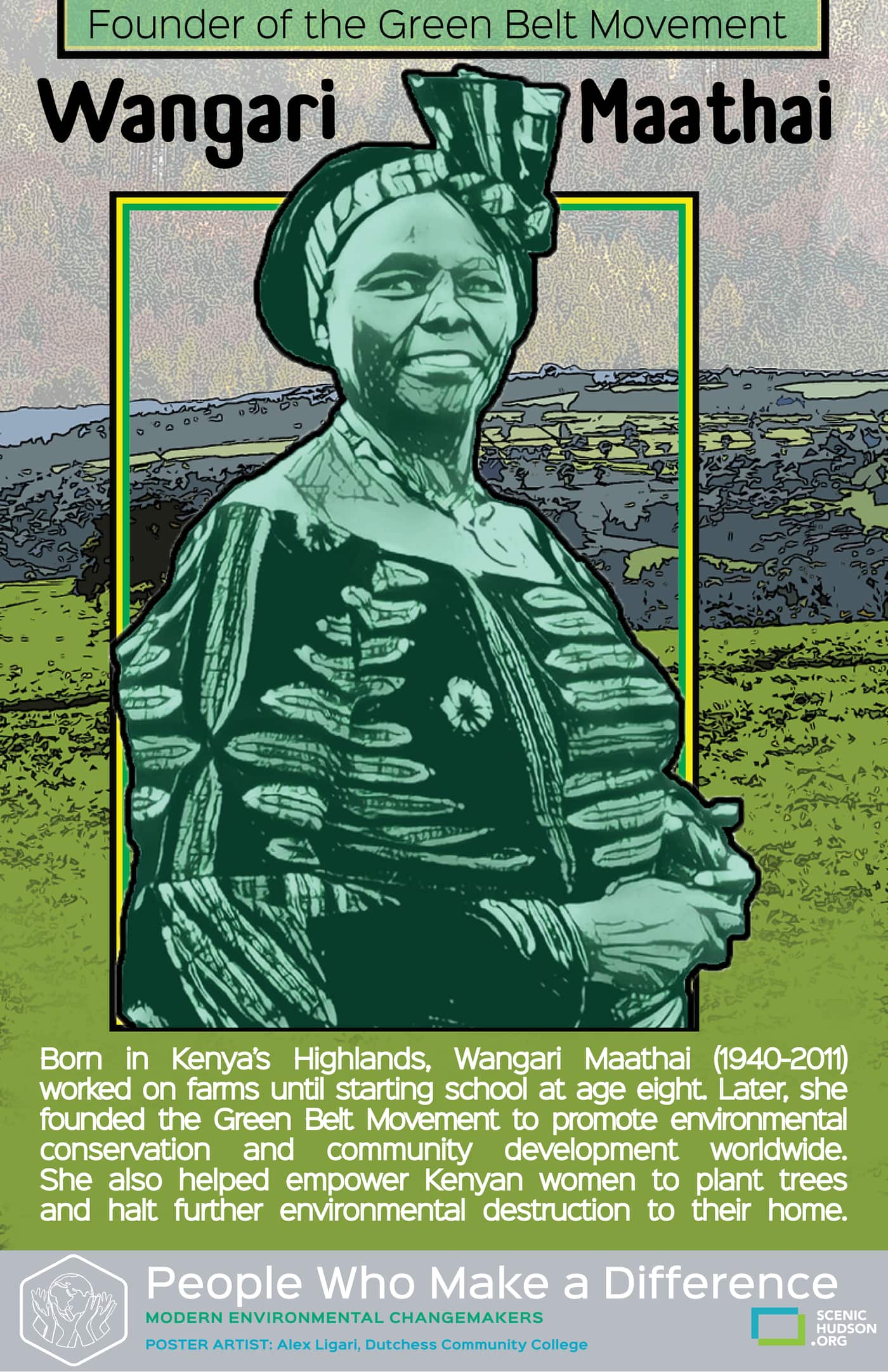
This week we are celebrating activists who have worked to safeguard clean water for all. Learn more about them and other grassroots environmentalists in our People Who Make a Difference virtual gallery tour.
Clean water — or the lack thereof — has been on the country’s mind in recent years. With stories of lead contaminated water in areas like Flint, Michigan, and the PFOS contamination right here in the Hudson Valley, the importance of clean, healthy water for all is more apparent than ever.
Contaminated water can have a serious impact on public health, aiding in the spread of infectious disease, limiting or prohibiting recreation, and threatening our deeply rooted connections to the earth.
It can also threaten precious habitats and wildlife. In the Hudson Valley, our sturgeon, stripers, eels, and countless other species rely on the Hudson River and its estuaries for survival.
On both a local and global level, activists are fighting hard to ensure that everyone has equal access to clean water.
Meet Aaron Mair: President of the Sierra Club
A New York native, Aaron Mair has spent much of his life advocating for environmental justice and civil rights. In 2015, Mair was elected president of the Sierra Club, making him the first African American person to hold that office.
Much of Aaron’s environmental advocacy relates to the cleanup of polychlorinated biphenyls (PCBs) in the Hudson River. In 2000, he received an EPA Environmental Quality Award for his efforts in cleaning the Hudson.
Aaron Mair continues to use his voice to speak up for environmental protection and civil rights, speaking and participating in demonstrations around the country.
Meet Wangari Maathai: Founder of Greenbelt Movement
A renowned activist and educator, Wangari Maathai was a trailblazer in the fight for environmental conservation and women’s rights. Maathai founded the Greenbelt Movement, an environmental organization that empowers women to conserve and improve the livelihood of their communities. The Greenbelt Movement uses tree planting as an entry point to promote clean water, combat deforestation, and support communities.
Maathai has also helped pave the way for African women in higher education. In 1971, she became the first Eastern African woman to earn a PhD. She was also the first woman to become an associate professor at the University of Nairobi. In 2004, Maathai became the first African woman to win the Nobel Peace Prize, which she was awarded for her dedication to conservation and human rights.
Meet Tokata Iron Eyes: Environmental and Indigenous Rights Activist
Since the age of 9, Tokata Iron Eyes has been an outspoken voice in the fight for Indigenous peoples’ rights. A member of the Standing Rock Sioux tribe, Tokata helped organize youth in her tribe to fight against the proposed Dakota Access Pipeline in 2016.
The pipeline was projected to run underneath the Missouri and Mississippi Rivers, which posed a serious threat to the nearby region’s drinking and irrigation water. Construction of the pipeline also threatened to disturb sacred burial grounds and other important Sioux cultural sites.
Indigenous peoples, including Tokata and other young people, mobilized to stop the construction of the pipeline and protect their right to clean water and land. Now 16, Tokata uses her platform to continue fighting for Indigenous people’s rights, women’s rights, and clean water for all.
Meet Berta Cáceres: Environmental and Indigenous Rights Activist
Berta Cáceres was a Honduran environmental, political, and Indigenous rights activist from the Indigenous Lenca people. As a student activist, Cáceres founded the Council of Popular and Indigenous Organizations of Honduras (COPINH) in 1993. COPINH fought for Indigenous, LGBT, and women’s rights.
In 2006, Lenca people noticed an influx of construction equipment on their land, and asked COPINH for help. Cáceres uncovered the proposed construction of four hydroelectric dams on the Gualcarque River.
The dam threateted to cut hundreds of Lenca people off from their supply of water, food, and other resources, violating their right to sustainably manage their own land. Cáceres mobilized Lenca people to create a grassroots movement and successfully halt construction of the dams.
These activists have made great strides toward protecting the environment and fighting for Indigenous Peoples’ rights. They inspire us to make a difference and ensure that future generations have access to clean water.
Learn more about these youth climate activists and other change makers in our People Who Make a Difference collaborative poster project that celebrates inspiring grassroots environmentalists who may not have always been recognized—including people of color, women, youth, Native Americans and members of other indigenous groups. Take a virtual gallery tour of posters honoring these extraordinary people created by graphic design students from Dutchess Community College.



